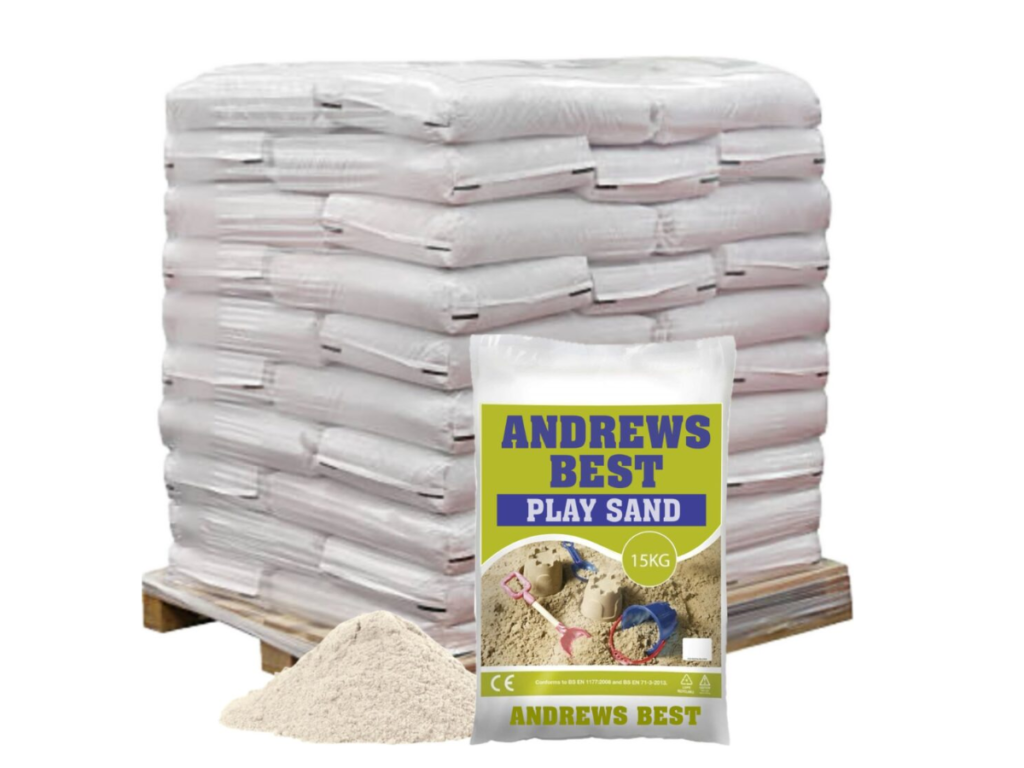When it comes to sandbags, the material they’re made of is crucial for their durability. The type of material determines how well the sandbag holds up against different conditions and how long it lasts.
Let’s break down some common materials used for sandbags and what makes them suitable for various purposes:
Plastic:
Plastic is a popular choice for heavy-duty sandbags because it’s tough and resilient. Unlike other materials, plastic doesn’t absorb water, which means it won’t degrade quickly when exposed to moisture.
Whether it is rain, flooding, or extreme weather, plastic sandbags can withstand the elements without losing their strength. They’re designed to take on wear and tear, making them ideal for long-term use in challenging environments.
Burlap:
Burlap is a classic material known for its breathability and natural decomposition. While it may not be as durable as plastic, burlap sandbags serve their purpose well in certain situations.
They’re often used when protection isn’t permanent or when environmental considerations are important. Burlap sandbags gradually break down over time, making them suitable for temporary solutions or applications where biodegradability is desired.
Polypropylene:
Polypropylene is a lightweight material commonly used in sandbags for its water-resistant properties. Sandbags made from polypropylene are effective at repelling water, making them valuable for controlling floods and water-related emergencies. Despite being lightweight, polypropylene sandbags are durable and can withstand moderate wear and tear.
The Design and Construction Factor
Tailoring the shapes and sizes of the bags further enhances their usability and versatility, making them suitable for various applications and environments. Whether it’s for emergency flood control or everyday construction projects, investing in well-designed and well-constructed sandbags ensures reliable performance and peace of mind when you need it most.
Robust Design Features:
Crafting a durable sandbag starts with incorporating robust design features. This includes double-stitched seams and reinforced edges. These features are like the backbone of the sandbag, providing essential strength and durability. Double-stitched seams ensure that the bag’s seams are securely held together, reducing the risk of tearing or bursting, especially when the bag is subjected to heavy loads or pressure. Similarly, reinforced edges add an extra layer of protection, preventing fraying and extending the lifespan of the bag. Together, these design elements contribute significantly to the bag’s ability to withstand wear and tear, ensuring long-lasting performance even in challenging environments.
Tailored Shapes and Sizes:
Another crucial aspect of sandbag endurance is tailoring their shapes and sizes to specific needs. One size doesn’t fit all when it comes to sandbags.
By customizing the shape and size of the bags, they become more practical and efficient for various applications.
Whether it’s for flood control, erosion prevention, or construction projects, having sandbags that are tailored to the task at hand ensures optimal performance and effectiveness.
Additionally, customized sandbags are easier to handle and deploy, making them more user-friendly across different settings. This versatility increases their usability and makes them a valuable resource in a wide range of scenarios.
Versatility and Adaptability
Heavy sand sacks are more than just bags filled with sand; they’re versatile tools that can adapt to a wide range of needs and situations. Let’s explore why versatility and flexibility are essential characteristics of heavy-duty sandbags and how they make them invaluable for various applications:
Adaptability to Different Uses:
The true strength of a heavy sand sack lies in its ability to serve multiple purposes. Whether it’s stopping water from flooding, holding cargo securely in place, or assisting with farming work, heavy-duty sandbags are versatile enough to handle a variety of tasks.
Their durable construction and sturdy design make them reliable tools for addressing different needs and challenges, regardless of the situation.
From emergency flood control to everyday agricultural tasks, heavy sand sacks are indispensable assets that can be adapted to suit a wide range of applications.
Meeting Varied Needs:
One of the key benefits of heavy sand sacks is their ability to meet varied needs without compromising on strength or reliability.
Sandbags from quality suppliers are specifically designed with versatility in mind, ensuring that they can seamlessly transition from one task to another without losing their effectiveness. Whether you need to build a temporary barrier to prevent flooding, create a stable base for construction projects, or provide ballast for tents and shelters, these bags are up to the challenge. Their adaptability allows them to be used in diverse environments and situations, making them essential tools for both professionals and homeowners alike.
Designed for Evolution:
Quality sandbags are engineered to evolve with changing needs and circumstances.
Whether you need to adjust the size, shape, or weight of the bags, many suppliers let you customize your bags to meet your specific requirements.
The Importance of Choosing a Reliable Supplier for Sandbags
When it comes to purchasing sandbags, choosing the right supplier is crucial for ensuring quality, reliability, and peace of mind. Here’s how…
Quality Assurance:
From the selection of materials to the construction of the bags, reputable suppliers adhere to strict quality standards to ensure that their products meet or exceed customer expectations. By choosing a reputable supplier, you can trust that you’re getting sandbags that are built to last and perform effectively in various applications.
Reliability and Consistency:
Reputable suppliers have a proven track record of delivering quality products consistently over time. They have established systems and processes in place to maintain consistency in product quality, delivery times, and customer service.
Expertise and Knowledge:
They often have years of experience and expertise in the industry, making them valuable resources for guidance and advice. They understand the unique requirements of different applications and can help you find the right sandbags to suit your needs, ensuring optimal performance and satisfaction.
Compliance and Safety:
A good supplier prioritizes compliance with industry standards and regulations to ensure the safety and integrity of their products. They invest in rigorous testing and quality control measures to verify that their sandbags meet all relevant safety and performance standards.
Customer Support and Satisfaction:
From answering inquiries and addressing concerns to providing after-sales support and assistance, an efficient supplier is committed to ensuring a positive customer experience every step of the way.
Over to You…
When it comes to selecting sandbags, remember the importance of design and durability.
Choosing sandbags crafted with sturdy construction and thoughtful design features ensures they can withstand various conditions and tasks effectively.
Moreover, always purchase from a reputable supplier. These suppliers prioritize quality, reliability, and customer satisfaction, offering products that meet industry standards and provide peace of mind. By buying from a reputable supplier, you can trust that you’re investing in high-quality sandbags that will meet your needs and stand the test of time.





